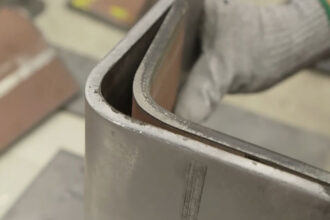Let’s be honest—until you need one, most homeowners have never heard of an MVHR unit. But once you discover what these systems can do for your home’s air quality and energy efficiency, you’ll wonder how you ever lived without one.
MVHR stands for Mechanical Ventilation with Heat Recovery. These systems continuously extract stale air from your home while bringing in fresh air from outside. The clever part? They recover heat from the outgoing air to warm the incoming air, keeping your home comfortable without wasting energy.
If you’re considering installing an MVHR unit, this guide will help you navigate the key factors to consider, ensuring you choose the right system for your home.
Why Your Home Needs an MVHR Unit
Modern homes are more airtight than ever before. While this is great for energy efficiency, it creates a problem: poor indoor air quality. Without proper ventilation, your home can become stuffy, humid, and filled with pollutants.
An MVHR unit solves this problem by providing continuous fresh air while recovering up to 95% of the heat that would otherwise be lost through traditional ventilation methods. This means you get fresh air without the energy penalty.
The benefits extend beyond just comfort. These systems can help reduce condensation, prevent mold growth, and even alleviate symptoms for family members with allergies or asthma. Plus, they operate so quietly you’ll barely notice them running.
Understanding MVHR Unit Sizing
Getting the size right is crucial. Too small, and your system won’t adequately ventilate your home. Too large, and you’ll waste money on both the initial purchase and ongoing energy costs.
MVHR units are typically sized based on the number of air changes per hour your home needs. Most residential properties require between 0.3 to 0.5 air changes per hour, but this can vary based on:
- The size of your home
- Number of occupants
- Layout and room usage
- Local climate conditions
A professional assessment is essential here. They’ll calculate your home’s specific ventilation requirements and recommend the appropriate unit size. Don’t try to guess—getting this wrong can lead to poor performance and wasted money.
Key Features to Consider
When comparing MVHR units, several features can make a significant difference in performance and user experience.
Heat Recovery Efficiency
Look for units with heat recovery rates of 90% or higher. This means the system recovers 90% of the heat from outgoing air, making it highly energy-efficient.
Noise Levels
Since these systems run continuously, noise levels matter. Look for units with noise ratings below 40 dB. For context, that’s quieter than a typical refrigerator.
Filter Quality
Your MVHR unit is only as good as its filters. Higher-grade filters (like HEPA filters) can remove more pollutants, allergens, and fine particles from incoming air.
Control Options
Modern units offer various control options, from simple manual controls to smart home integration. Consider how you want to interact with your system and whether features like humidity sensors or air quality monitoring are important to you.
Installation Considerations
Installing an MVHR unit isn’t a DIY project. These systems require careful planning and professional installation to work effectively.
The installation process involves:
- Ductwork design and installation – This is often the most complex part, especially in existing homes
- Unit positioning – Usually installed in lofts, basements, or utility rooms
- Electrical connections – Must be done by a qualified electrician
- Commissioning – The system needs to be properly balanced and tested
Installation costs can vary significantly depending on your home’s layout and accessibility. Retrofitting an existing home is typically more expensive than installing during new construction or major renovations.
Maintenance Requirements
Like any mechanical system, MVHR units require regular maintenance to perform optimally. The good news? Maintenance is relatively straightforward.
Filter Changes
This is the most important maintenance task. Filters typically need changing every 6-12 months, depending on your local air quality and usage. Some systems have washable filters, while others require replacement filters.
Ductwork Cleaning
Every few years, you’ll need to have the ductwork professionally cleaned to remove any buildup of dust or debris.
Unit Servicing
Annual servicing by a qualified technician helps ensure optimal performance and can identify potential issues before they become problems.
Common Mistakes to Avoid
Many homeowners make these mistakes when choosing an MVHR unit:
Focusing solely on price – While budget matters, the cheapest unit isn’t always the best value. Consider long-term energy savings and performance.
Ignoring noise ratings – A noisy system can become a constant source of annoyance.
Skipping professional assessment – Trying to size a system yourself often leads to poor performance.
Forgetting about maintenance – Factor in ongoing costs for filters and servicing when budgeting.
Making Your Decision
Choosing the right MVHR unit comes down to balancing your specific needs, budget, and home characteristics. Start by getting quotes from multiple installers who can assess your home and recommend appropriate systems.
Don’t rush the decision. A quality MVHR unit is an investment that will serve your home for many years. Take time to research options, read reviews, and ask installers plenty of questions.
Remember, the best MVHR unit for your neighbor might not be the best for you. Every home is different, and your system should be tailored to your specific situation.
Ready to Breathe Easier?
Installing an MVHR unit is one of the best investments you can make in your home’s comfort and energy efficiency. While the initial cost might seem significant, the long-term benefits—better air quality, lower energy bills, and increased comfort—make it worthwhile.
Start by contacting local MVHR installers for assessments. Get multiple quotes, ask about warranties, and don’t be afraid to ask detailed questions about performance and maintenance requirements.
Your lungs (and your energy bills) will thank you for making the investment in cleaner, fresher indoor air.
















